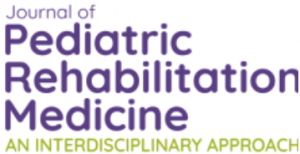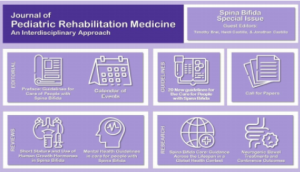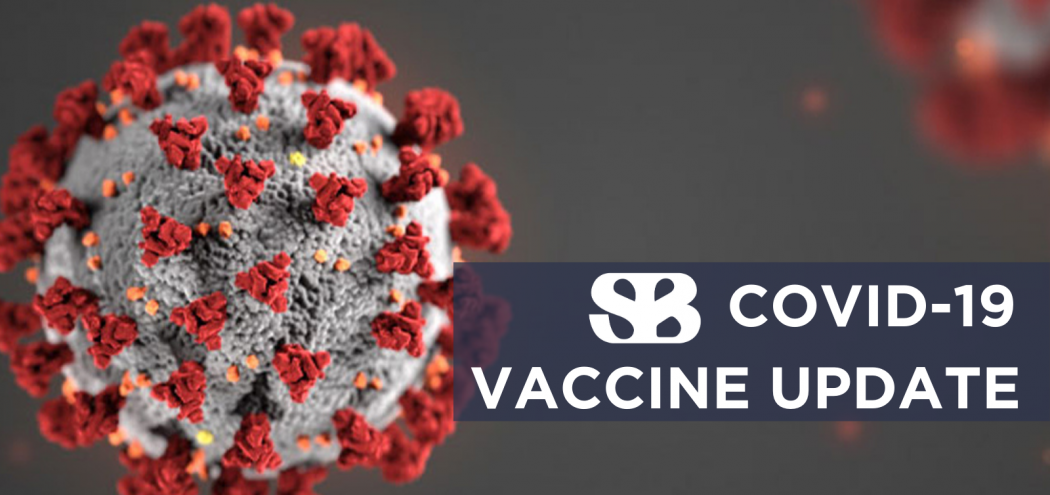
Contacts:
Diana Murray
IOS Press
+1 718-640-5678
Sheliah Roy
Spina Bifida Association
+1 202-618-4743
Expanded Spina Bifida Guidelines Cover Care from Newborn to Adult
Noted experts present scientifically-based guidelines for spina bifida care to the worldwide community of clinicians and investigators to improve patients’ quality of life in this special issue of the Journal of Pediatric Rehabilitation Medicine
Amsterdam, NL, February 9, 2021 – Globally, nearly 300,000 babies are born with neural tube defects including spina bifida (SB) each year. This openly available special issue of the Journal of Pediatric Rehabilitation Medicine (JPRM) provides 20 important evidence- and consensus-based updates to key sections of the 2018 “Guidelines for the Care of People with Spina Bifida” issued by the Spina Bifida Association (SBA). These reflect current recommendations for the care of patients with SB across the entire lifespan, from prenatal counseling to adult care.
As a result of research advancements and improved team-based patient care, approximately 80%-90% of children with SB now live to adulthood in the United States. The Guidelines were written with this idea in mind and present the best evidence for what care should be delivered, regardless of the model or types of practitioners available.
“Medical evidence and clinical practice continue to change, and so it was time to update the most recent set of Guidelines to provide the best, most up-to-date recommendations, focusing not only on pediatric care, but also on safely transitioning young adults with SB from pediatric to adult healthcare services,” explained co Guest Editors Jonathan Castillo, MD, MPH, and Heidi A. Castillo, MD, both from Developmental Pediatrics, Department of Pediatrics, Meyer Center, Texas Children’s Hospital/Baylor College of Medicine, Houston, TX. “Guidelines needed to be included and/or revised to reflect the needs of adults with SB. The goal was to provide a more holistic approach to care. It is not just a condition that affects health but affects life.”
Judy Thibadeau, RN, MN, Director of Research and Services, Spina Bifida Association, Arlington, VA, added, “Pediatric and adult providers need to embrace the fact that adult providers will be needed and important to the lives of people with SB.”
The updated and expanded sections of the Guidelines presented in this issue move beyond more traditional issues of neurosurgical, urologic and orthopedic care, emphasize the continuum of care, health, wellbeing and quality of life, and include more background information about key topics and why they are important in the care of individuals with SB. They cover:
- Bowel function and care
- Central precocious puberty
- Coordination of care
- Family functioning in families with a child with SB
- Health promotion and preventive healthcare service guidelines
- Latex allergy
- Mental health
- Mobility
- Neuropsychological care
- Neurosurgical guidelines
- Nutrition, metabolic syndrome, and obesity
- Orthopedic guidelines
- Prenatal counseling
- Quality of life
- Self-management and independence
- Sexual health and education
- Short stature and the effect of human growth hormone
- Skin-related issues
- Urologic guidelines
- Women’s health
“These Guidelines stress other issues that are important to successfully transition to adulthood including (but not limited to) family functioning, mental health, women’s and men’s health, and self-management skills in the broader societal and participation context,” noted co-Guest Editor and SBA Medical Director Timothy John Brei, MD, Division of Developmental Medicine, Department of Pediatrics, Seattle Children’s Hospital and the University of Washington School of Medicine, Seattle, WA. “These Guidelines acknowledge that one can have good medical health and still struggle in terms of independence and across the lifespan. So, they are not just about medical care across the lifespan, but ‘life care.’”

Image: An overview of the Journal of Pediatric Rehabilitation Medicine’s spina bifida (SB) special issue, which features an open access collection of key updates to the “Guidelines for the Care of People with Spina Bifida” and several innovative original research studies. Credit: Journal of Pediatric Rehabilitation Medicine.
In addition, neural tube defects like SB have widespread global significance. Some countries manage the care of patients with SB better than others, particularly when it relates to the care of adults with SB. Therefore, global accessibility to the Guidelines and their updates is vital, as healthcare professionals embedded in local communities will seek to use this guidance to provide high-quality care with a view towards reducing healthcare disparities. Language differences, immigration, cultural beliefs, acculturation, local resources, and social determinants of health must be taken into account when these Guidelines are implemented throughout the world.
SBA’s Collaborative Care Network, through a cooperative agreement with the National Center on Birth Defects and Developmental Disabilities (NCBDDD), part of the Centers for Disease Control and Prevention (CDC), supported the production of the “Guidelines for the Care of People with Spina Bifida.” These Guidelines were the culmination of three years of planning and work involving over 100 international experts using evidence-based research and consensus methodologies. The text of the Guidelines is openly available on the SBA website and the position papers in this special issue have been published open access through the support of the SBA.
“It is the hope of SBA that these and future Guidelines will promote and standardize best practice regardless of the characteristics of individuals with SB or where their care is received. It is through providing better care that we will ultimately achieve a better future for all those living with SB,” remarked Brad E. Dicianno, Associate Medical Director, SBA, and Director, UPMC Adult Spina Bifida Clinic, Pittsburgh, PA.
“These open access Guidelines are paramount towards educating individuals with SB and their medical providers,” commented Editor-in-Chief of JPRM Elaine L. Pico, MD, UCSF Benioff Children’s Hospital Oakland, CA. “With better health and these Guidelines distributed worldwide we are looking at a robust aging population of those with SB that must be attended to by knowledgeable medical providers.”
“We are so thankful to the journal for its continued focus on SB. Truly, it is a gift to our community, and we are grateful and excited to be part of what has happened thus far. We can’t wait to see where this takes all of us,” commented Sara Struwe, MPA, President & CEO, Spina Bifida Association, Arlington, VA. “From our community to yours, thank you!”
###
NOTES FOR EDITORS
Guidelines for the Care of People with Spina Bifida
Journal of Pediatric Rehabilitation Medicine, Volume 13, Issue 4 (published by IOS Press) Guest Editors: Jonathan Castillo, MD, MPH, Baylor College of Medicine and Texas Children’s Hospital, Houston, TX; Heidi A. Castillo, MD, Baylor College of Medicine and Texas Children’s Hospital, Houston, TX; and Timothy John Brei, MD, Seattle Children’s, Seattle, WA
The issue is openly available click here.
https://content.iospress.com/articles/journal-of-pediatric-rehabilitation-medicine/prm200691
This publication was supported in part by Cooperative Agreement U01DD001077, funded by the National Center on Birth Defects and Developmental Disabilities (NCBDDD) Centers for Disease Control and Prevention. Articles are published open access through the support of the Spina Bifida Association.
Full text of the articles is also available to journalists upon request. Contact Diana Murray, IOS Press, at +1 718-640-5678 or [email protected] for additional information. Journalists who wish to interview the Guest Editors or authors should contact Sheliah Roy, Spina Bifida Association, at +1 202-618-4743 or [email protected].
ABOUT THE JOURNAL OF PEDIATRIC REHABILITATION MEDICINE
Editor-in-Chief: Elaine L. Pico, MD, FAAP, FAAPM&R, UCSF Benioff Children’s Hospital Oakland The Journal of Pediatric Rehabilitation Medicine (JPRM): An Interdisciplinary Approach is designed to parallel the multidisciplinary teams caring for children, adolescents, and adults with childhood-onset physical disabilities and complex care needs worldwide. Published quarterly, topics include, and are not limited to, cerebral palsy, traumatic brain injury, spinal cord injury, spina bifida, limb deficiency, muscular dystrophy, stroke, cancer, developmental delays, and rare disorders. Furthermore, the journal welcomes papers dedicated to pediatric rehabilitation from a global health perspective. www.iospress.com/journal-of-pediatric rehabilitation-medicine
ABOUT IOS PRESS
IOS Press is headquartered in Amsterdam with satellite offices in the USA, Germany, India, and China and serves the information needs of scientific and medical communities worldwide. IOS Press now publishes more than 90 international peer-reviewed journals and about 70 book titles each year on subjects ranging from computer science, artificial intelligence, and engineering to medicine, neuroscience, and cancer research. www.iospress.com
ABOUT THE SPINA BIFIDA ASSOCIATION
The Spina Bifida Association (SBA), founded in 1973, is the only national voluntary health agency dedicated to Spina Bifida. The mission is to build a better and brighter future for all those impacted by Spina Bifida. Fueled by dedicated healthcare providers, parents, adults, caregivers, and others, we are committed to helping people live longer, healthier lives through Research, Education & Support Clinical Care, Network Building, and Advocacy. www.spinabifidaassociation.org
Recent
SBA launching Florida statewide chapter
